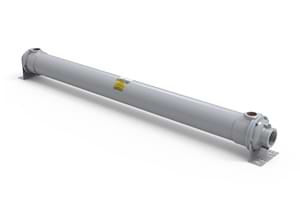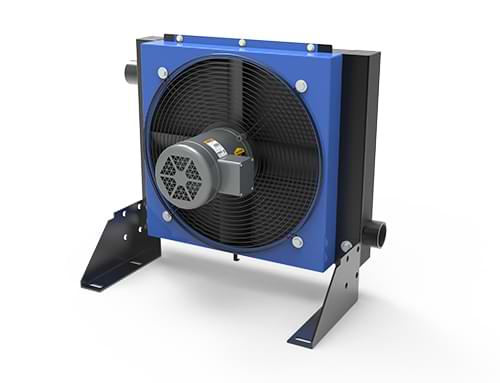Aftercoolers for Chemical and Petrochemical Industries
Why does that matter? Well, when you compress a gas, it heats up—sometimes a lot—and that hot gas can mess with downstream equipment, reduce efficiency, or even throw off a reaction. Aftercoolers step in to bring the temperature back down, usually by running the gas through tubes while air or water cools it from the outside.
Applications
- Refinery Gas Processing: In oil refineries, aftercoolers handle compressed gases like hydrogen or methane. Cooling them down prevents equipment corrosion and preps them for purification—think sulfur removal or catalytic cracking.
- Polymer Production: When making polyethylene or polypropylene, compressors boost gas pressure for reactors. Aftercoolers cool those streams, ensuring the polymers form correctly without excess heat throwing off the molecular weight.
- Air Separation Units: For plants splitting air into nitrogen, oxygen, and argon, aftercoolers manage the compressed air feed. A good cooling step here boosts cryogenic efficiency downstream.
Water Cooled Aftercoolers
Compressor Cooling
- Fixed or Removable Tube Bundles
- Material Options Available
- Standard and Custom Options

Air Cooled Aftercoolers
Compressor Cooling
- Use Ambient Air to Cool
- Variety of Motor Options
- Standard Pressures of Up To 250 psi

The Benefits of Aftercoolers for Chemical and Oil Applications
In chemical plants, aftercoolers are a lifeline for keeping processes stable. Take ammonia production, for example. After the synthesis gas gets compressed, it’s piping hot—often over 200°C. An aftercooler knocks that temperature down so it’s safe for the next steps, like feeding it into a reactor. Without it, you’d risk damaging catalysts or skewing the whole process. Same goes for petrochemical setups like ethylene plants. Here, aftercoolers chill hydrocarbon streams post-compression, making sure they’re ready for fractionation or other separation steps. It’s less about drama and more about keeping things running smoothly.
Anbother example of where aftercoolers benefit the industry, is in a typical LNG (liquefied natural gas) facility. Aftercoolers are key after the gas compressors, dropping temperatures so the gas can move into the liquefaction phase without overloading the system. I’ve heard engineers say it’s like giving the process a breather—everything just works better when it’s not overheating.
The design can vary—air-cooled units are common where water’s scarce, while water-cooled ones dominate in bigger plants with cooling towers. Either way, they’re built tough to handle corrosive gases or high pressures, which is non-negotiable in these industries. So, next time you’re thinking about what keeps a chemical plant humming, give a nod to the aftercooler—it’s quietly doing some serious work.


